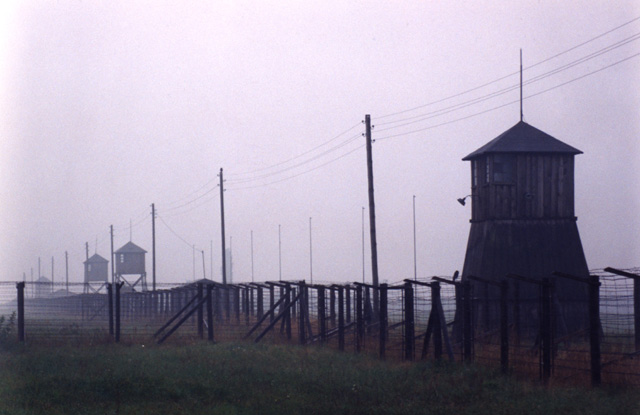
A barbed-wire fence and wooden guard towers stretch around the perimeter of Majdanek Concentration Camp.
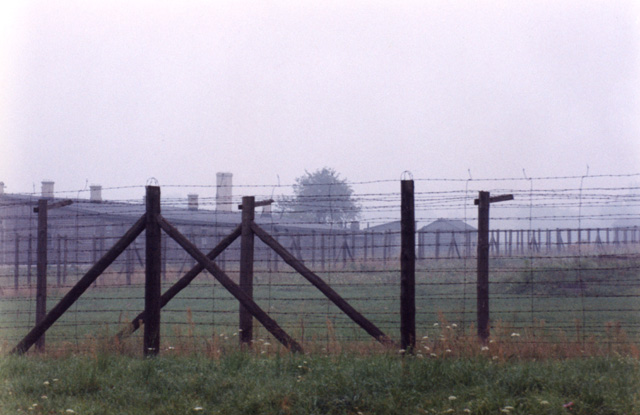
Majdanek
Concentration Camp
(Majdanek is pronounced MY-duh-nek by Americans and Muh-DON-ek by Poles.)
 |
|
|
A barbed-wire fence and wooden guard towers stretch around the perimeter of Majdanek Concentration Camp. |
 |
Majdanek is located 2Ĺ miles from the center of Lublin, a city in southeast
Poland near the border with Ukraine and nearly 100 miles from Warsaw. Here in
1941, the Germans established a concentration camp, initially as a prison for
Russian prisoners-of-war. In April 1942, they converted it into an extermination
camp for Jews, political prisoners, and other people considered to be
undesirables. Today the site of the former concentration camp is a memorial and
museum. According to the official guidebook, the percentage of Jewish victims
was 48%. Of the remaining victims, 31% were Polish political prisoners, 16% were
Soviet prisoners of war, and 5 percent were prisoners from other countries,
including a few American prisoners-of-war.
The first Jewish inmates came from long distances: Slovakia (now the Czech
Republic), Austria, Germany, France, and Holland. Then they came from closer in:
Lublin, Warsaw and Bialystok, Poland. An estimated 1.5 million prisoners were
killed.
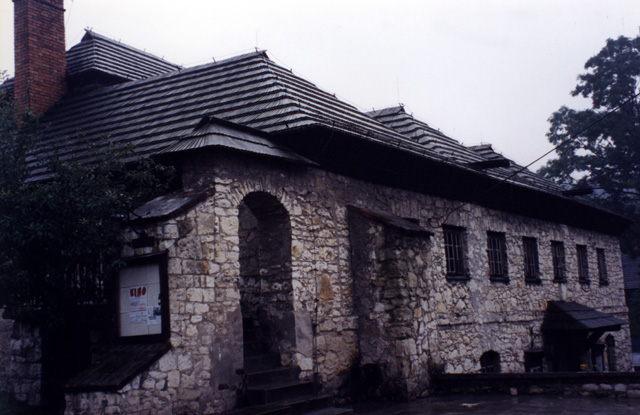 |
|
Processing center |
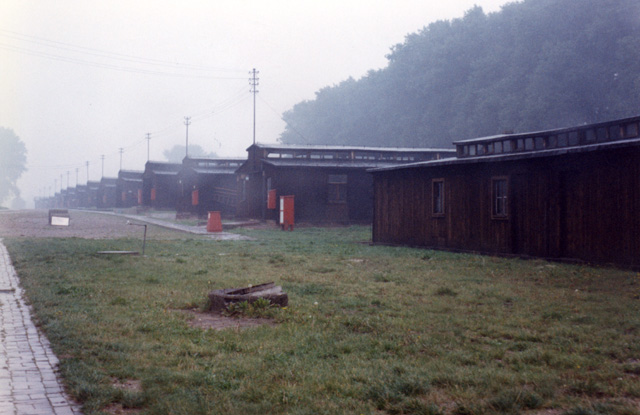 |
|
The Germans used barracks like these to store shoes, clothing, eyeglasses, and other possessions taken from the Jewish prisoners, including their hair. Once the items were sorted and deloused, they were shipped to Germany and given to German civilians who had lost their belongings in Allied bombings. Majdanek also served as a processing center for clothing shipped from other concentration camps: Treblinka, Belzec, and Sobibor. |
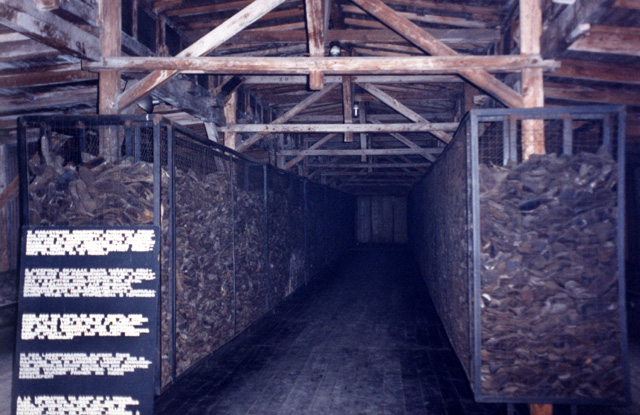 (a) |
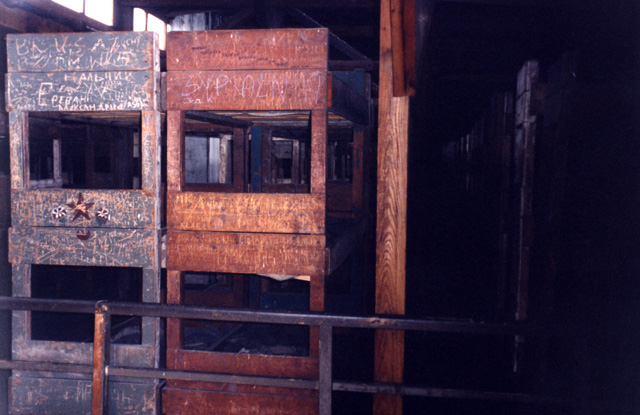 (b) |
| (a) One entire barrack was filled with shoes
of murdered people. These shoes were left behind when the SS fled the
approaching Soviet Army. Some of the shoes are on display at the U.S.
Holocaust Memorial Museum in Washington, D.C. (b) The prisoners slept in three-tiered bunks, with 500 to 800 people to a barrack. The buildings were originally designed to hold 250 people. |
|
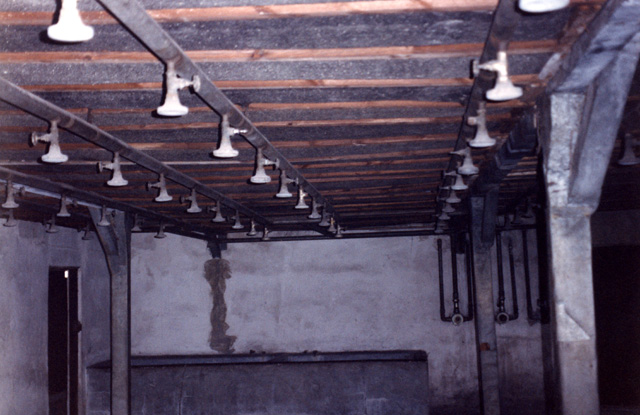 |
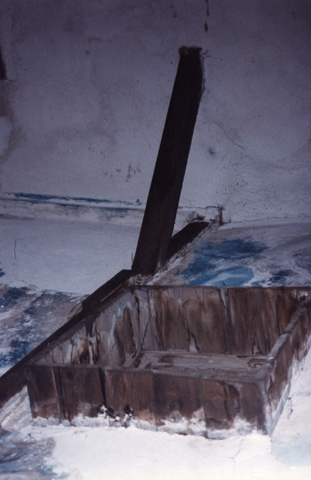 |
|
There were four gas chambers in Majdanek. The bright
blue stains inside of this gas chamber were created by prussic acid, the
main component of Zyklon B, the poisonous gas used to kill Jews and other
victims. |
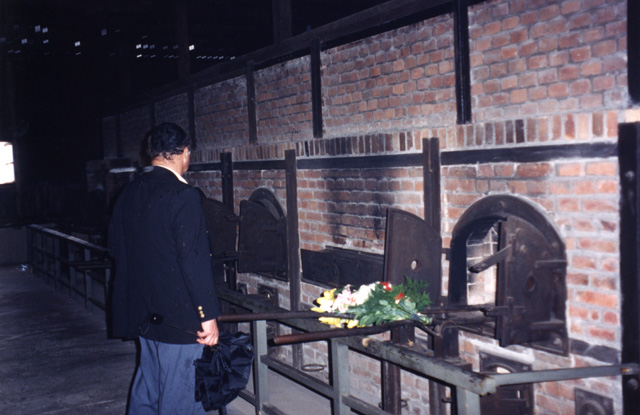 |
|
(above) The ovens inside a crematorium at Majdanek. Each oven could burn two bodies at a time. The flowers lie on top of a metal stretcher used to shove the corpses inside. Human ashes still remain in the ovens. (below) Heavy rollers were pulled over the ashes to crush bone fragments. Prisoners provided the power. |
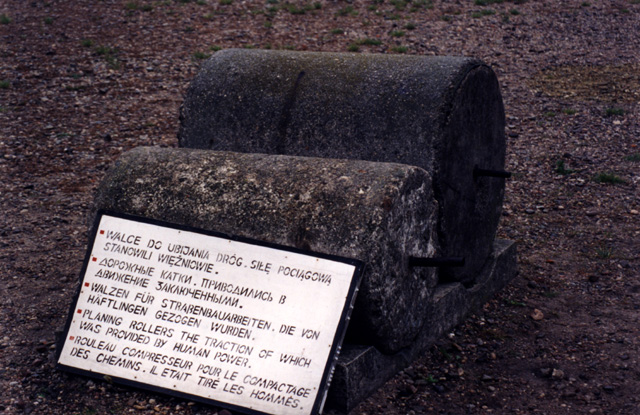 |
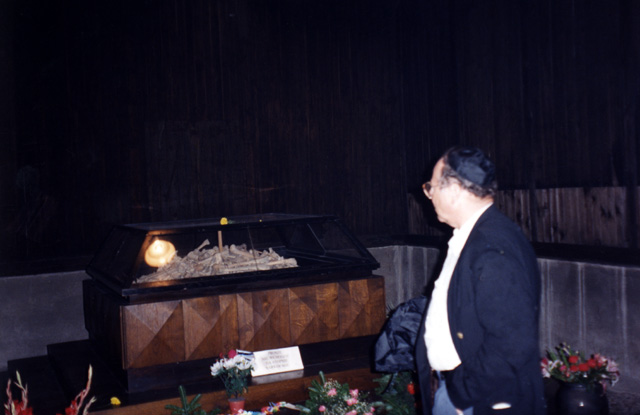 (a) |
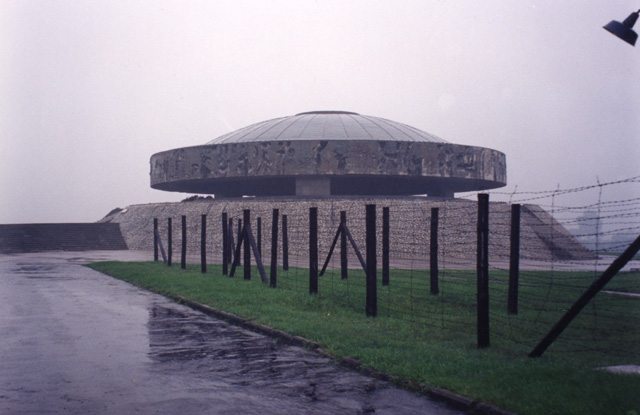 (b) |
| (a) This display case holds the bones of some of the
victims. (b & c) This concrete structure is a ohel. (d & e) A huge, saucer-shaped urn holds the ashes of some of the victims who were gassed and cremated at Majdanek. Bone fragments are visible. The ash layer appears to be at least 6 to 8 feet deep. The ashes donít blow away because they had been mixed with dirt and garden wastes in a compost heap. The Germans intended to spread the compost in a vegetable garden to fertilize the soil. |
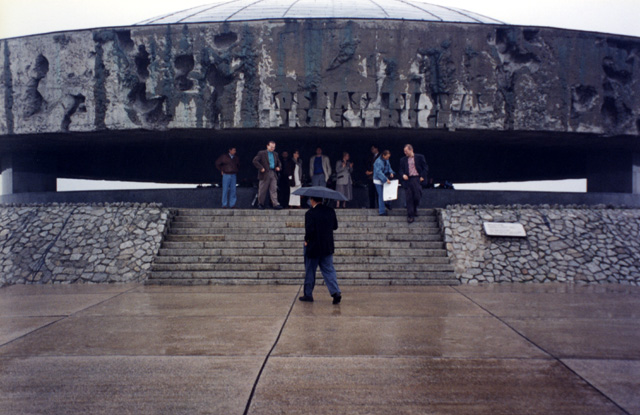 (c) |
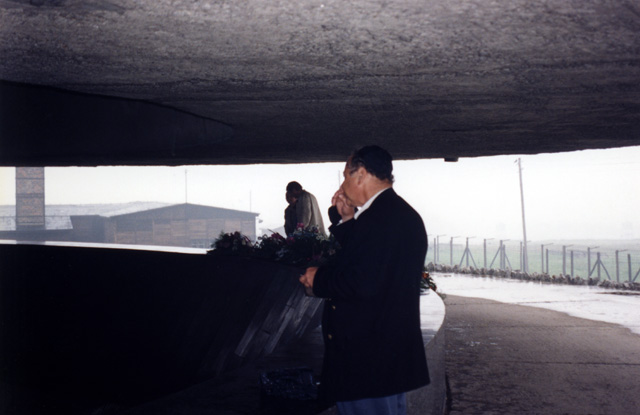 (d) |
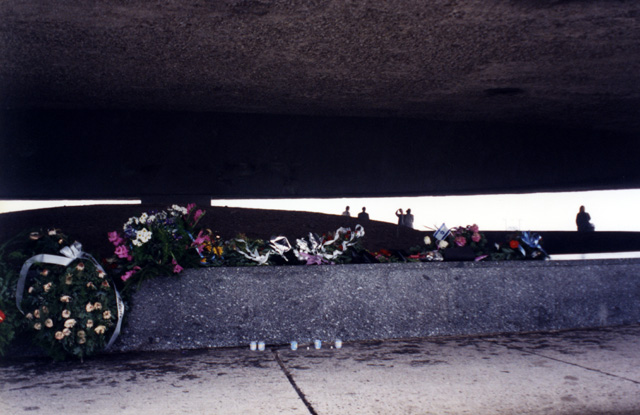 (e) |
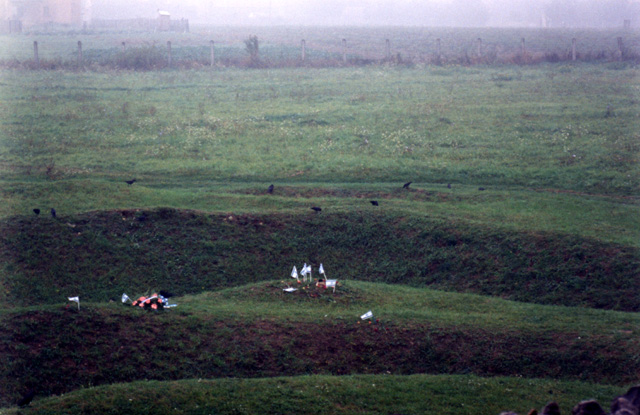 |
|
These wavy, grass-covered mounds are mass graves. The gas chambers and crematoria couldnít handle the high volume of prisoners, so throughout the period the death camp was in operation, the German used firing squads to execute inmates and they disposed of the bodies in mass graves. The worst mass execution occurred on November 3, 1943, when 18,0000 Jews were machine-gunned in trenches near the crematoria and covered with dirt. It is sickening to think that perhaps the lushness of the grass results from minerals leached from the human remains. |
For additional information on Majdanek, go to the Jewish Virtual Library Web
site, which is sponsored by the American-Israeli Cooperative Enterprise, a
nonprofit agency, which in turn is sponsored by the governments of the United
States and Israel.
http://www.us-israel.org/jsource/Holocaust/Majdanektoc.html